I whirled the Pinot Noir. Took the compulsory sniff. I arched my left eyebrow as if in deep contemplation and said, “this smells like burnt tire”. Dumpy was appalled and hoped that nobody heard.
“You’re weird,” he said
“But it does! Smell it. Close your eyes and think about it,” I said. Yes I know I am supposed to say something more elegant, like “hints of black pepper, dash of berries and kissed by roses,” or something along those lines. But nope, I was sticking with burnt tire. We were standing at the wine tasting bar at Amisfield Wine Company in Queenstown. I profess I wasn’t a huge fan of the Pinot Noir but I absolutely loved the vaulted ceiling of the stone building, the burning fireplace in the middle, the gently rolling hills outside and the hum of people talking endlessly. And the food earned bragging rights. We opted for the “Trust the Chef” tasting menu and was worth the steep price ($110 with wine pairing). After spending over three hours at the winery and waddling out with our full bellies, we decided to skip the remainder of the wineries in the area. We had some heavy digesting to do.
I was late to the drinking party and didn’t have my first wine tasting experience until 27. Initially wine tastings made me nervous because the winery’s attendant would start using words like dried fruit, bouquet, buttery, etc. I would nod in agreement but secretly thought “how did she taste all that in this drink?”. I was perplexed and too embarrassed to profess my ignorance. Over time and after lots of empty wine bottles, I started tasting the nuances and I now can oft time agree with the mainstream flavors. But I haven’t given in entirely to these tasting rules and maintain my right to point out my own, albeit bizarre, interpretations of wines.
So with my novice nose and tastebuds, I was pretty excited to do wine tasting in New Zealand’s Hawk’s Bay and Marlborough wine regions.
You can’t speak of Hawk’s Bay province without talking about Napier town, where we decided to spend two nights. The 1931 earthquake destroyed most of Napier and within two years the entire town got rebuilt in the popular architecture style of that time–Art Deco. The town has close to 150 Art Deco buildings that are now carefully preserved. Even the McDonalds was in an Art Deco building (my personal favorite). But I am a lush and didn’t come for the fanciful buildings. I came to drink.
Pics of Art Deco buildings:
The Mission Estate Winery in Hawk’s Bay was established by three French missionaries who planted a few vines in order to make table and sacramental wine. It was the first winery in New Zealand and its walls were covered with black and white pictures of priests. The Mission Estate’s faith has been tested through the years with the crippling floods of 1880 and earthquake of 1931 that killed 2 priests and 7 students, as well as some fires. That’s what makes visiting wineries so special–the struggles, stories and breakthroughs of the founders add a unique history flavor to each glass. It’s a craft with many winding roads. Famous for its Pinot Noir, the Mission Estate is known for its consistent quality and good value. None of the wines stood out for me personally, but the winery was equally well known for its restaurant. According to Dumpty, the fish of the day entree at the Mission Restaurant was one of the top 5 meals he had on the entire trip. Now that’s a bold statement.
The Church Road Winery wasn’t as fancy-shamansy as Mission Estate, but the white wines blew me away. The Sauvignon Blanc had the most beautiful and memorable aromatics. It was crisp, light and had a perfectly balanced sweetness. The vineyard for the Sauvignon Blanc grapes are grown about 300 meters above sea level and further inland than the other other grapes, and so they take advantage of the warm sunny days to build up the rich flavors but they also get the very cool evenings to bring out the florals. It was delicious. I am bummed that I can’t find it anywhere in the U.S. and the winery has even decreased their exports to Australia because of the rising demands within New Zealand. That’s the one downside of doing international wine tastings–you learn to love a new wine to only discover you may never drink it again. Sigh.
We had originally wanted to go to Trinity Hill as our final winery in Hawk’s Bay but it closed at 4pm! So we ended up driving around until we stumbled across C.J. Pask Winery. Now Gimblett Road, where CJ Pask and Trinity Hill were located, was originally considered unusable, barren and the least productive land in Hawks’ Bay. Nobody wanted it. Until Chris Pask, who needed a warmer climate for his Cabs decided to risk his reputation by buying a block of land. Soon enough other wine growers became interested in the area but Pask was always considered the founder of the road. Long story short, the region became a huge hit for its Merlot and Malbec wine growing properties and the property value of Gimblett Road skyrocketed. The red wines here were superior to that of Mission Estate and Church Road for sure and we walked away with a bottle of the Declaration Cabernet Merlot.
Marlborough was my favorite wine region in New Zealand. Not because of the wines per say but rather because I loved the area, our B&B and being able to ride our bicycles to the wineries. We almost didn’t come here, but the VAT guy at the Sydney airport told us we had to go to Marlborough. I became a member of a local video rental store (brought back memories of Blockbuster) for the three days that we stayed there. So when we weren’t wine tasting, we were watching Kill Bill and the extended version of the Lord of the Rings (totally worth it). It took us several days of streaming to download all of LOTR movies(the movies were already rented out at the video store); the internet in New Zealand SUCKS. Even Pakistan had a better internet connection and there we lost power every few hours! I was definitely living my fantasy life in Marlborough of drinking wine, eating, sleeping and watching movies I already knew were going to be good. It was heaven and a nice break from the hardcore traveling we had been doing.
It was hard to say which wineries we liked the best in Marlborough, but Highfield Estate Winery and Saint Clair Family Estate had the best vibe and ambiance. Highfield’s pinkish colored main building looked like it was transported straight from Italy. It was absolutely gorgeous and I had one of the most memorable lunches here (my top 2 in New Zealand and top 10 from our travels). I wasn’t surprised by how great their Limited Edition Rose was since the region is known for producing awesome Pinot Noir. Before this trip, I almost always opted for a red wine, but New Zealand has gotten me into Roses. I don’t like overly sweet wines at all, but the Rose here had a nice balance between strawberries and blackberries.
Saint Clair Family Estate was playing Stevie Ray Vaughn in the background as we entered–a good sign. Dumpty always claimed the Stevie is the world’s best guitarist; for someone who almost flunked music class, I couldn’t attest to that. I like visiting wineries managed by families because I think (perhaps wrongly so) that they must take more pride and pains in creating their wines. This particular winery was founded by the James Sinclair, one of the earlier settlers in the Blenheim region. Neal and Judy Ibbotson took over the vineyard and since then made it their mission to produce world-class wines. All three of their children are deeply intrenched in the family business. Their Sauvignon Blanc was probably the best, but it still didn’t compare to the wine at Church Road.
In the beginning I used to think wine appreciation was only reserved for veteran drinkers and wine snobs. So if I couldn’t “get” what these experts were describing, then it must be my own shortcomings and ignorance. But over time I have learned that wine, like everything else in life, is purely a personal choice. I no longer shy away from disliking a Chardonnay that everyone else raves about (still love San Fran Chardonnays the best) or flat out acknowledging I don’t taste the same flavors that experts taste.

Looking out at the Mission Estate vines.
I know this sounds left-field, but during my pregnancy I learned that the baby starts developing a taste preference in its final months in the womb–whatever the mother eats becomes enjoyable to the baby. I found that fascinating. And then of course our sense of taste is further fine tuned by our local culture, restaurants, climate and even age. So it’s nearly impossible for our taste buds to experience the exact same flavor (I wonder if the same is true for seeing color) because it’s a combination of chemical signals on the tongue as well as our psychological attachments to particular tastes. So even though your glass tastes like black peppers, my glass of the same wine might tastes of burnt tire. And that’s okay.



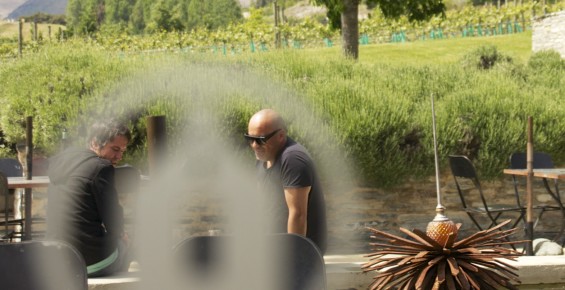
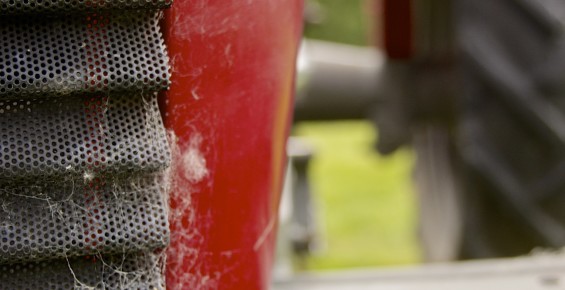
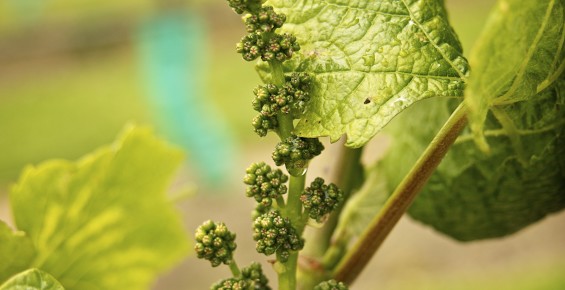
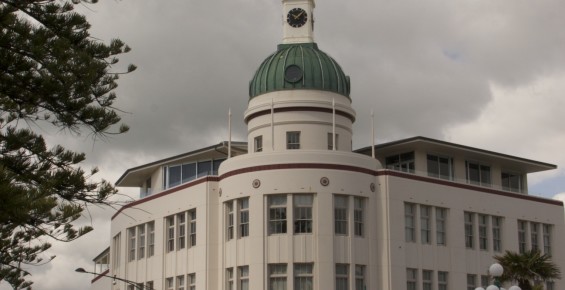

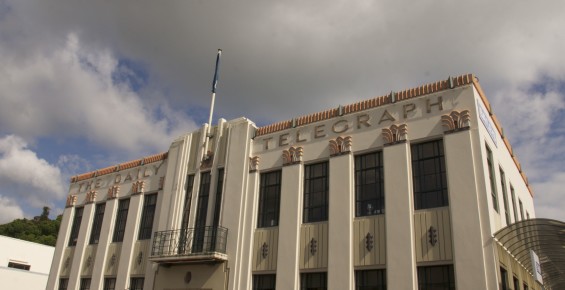


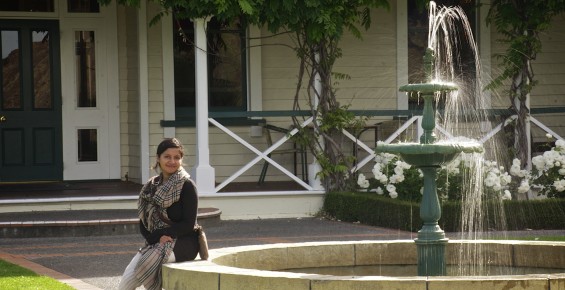
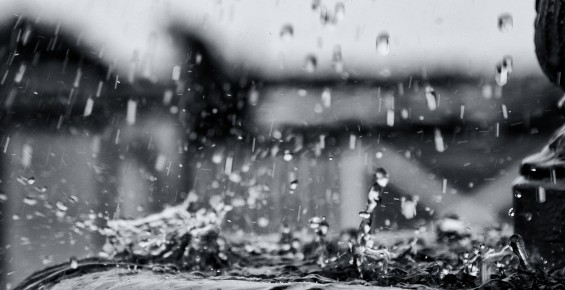
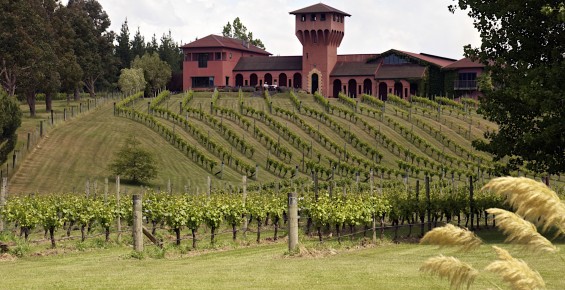
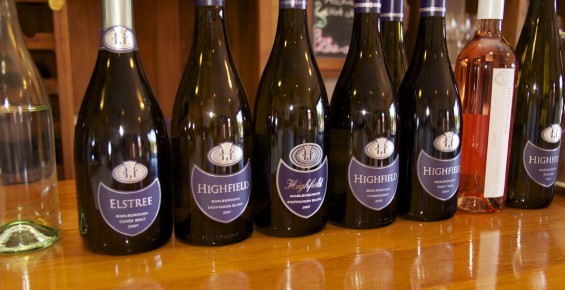
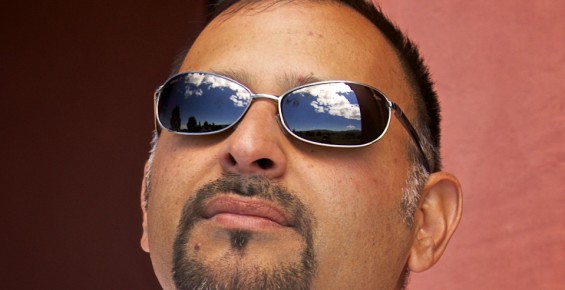


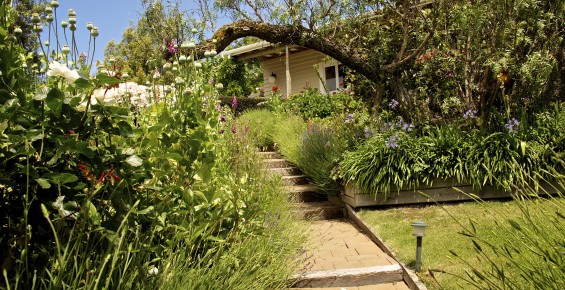
I loved this post, and the pics are fantastic. It’s so fun to read from your point of view!